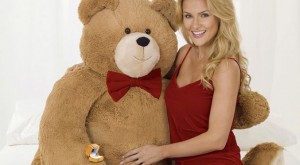
Jazz Jennings posing with her book that was written to support transgender teens.
Fourteen-year-old Jazz Jennings became a You Tube star as she advocated for transgender rights. Recently, Clean and Clear featured her in an online advertising campaign called “See the Real Me.” [youtube]https://www.youtube.com/watch?v=vyNZXQ136oI[/youtube].
Now she is becoming the first to star in a reality TV show that focuses on the life of a transgender teen. According to CNN, the show called “All That Jazz” will debut on TLC in the summer of 2015 and focus on Jazz and her family “dealing with typical teen drama through the lens of a transgender youth.”
I’m glad to see more shows with diverse casts that feature people in in more complex ways who are transgendered. But, given that TLC is the same network that featured such “reality” shows as Here comes Honey Boo Boo and Toddlers and Tiaras, I am not holding my breath waiting for a thoughtful portrayal of the life of a young person who also happens to be transgendered.
If this show falls prey to the same oversimplified, one-dimensional representations of gender that some of the other TLC shows include, this leaves us with question: Is it better to have no or few representations of a person who is transgendered, or one that may have some truths to it, while overemphasizing “drama” and perhaps reinforcing some stereotypes too?


 ls’ schools.
ls’ schools.